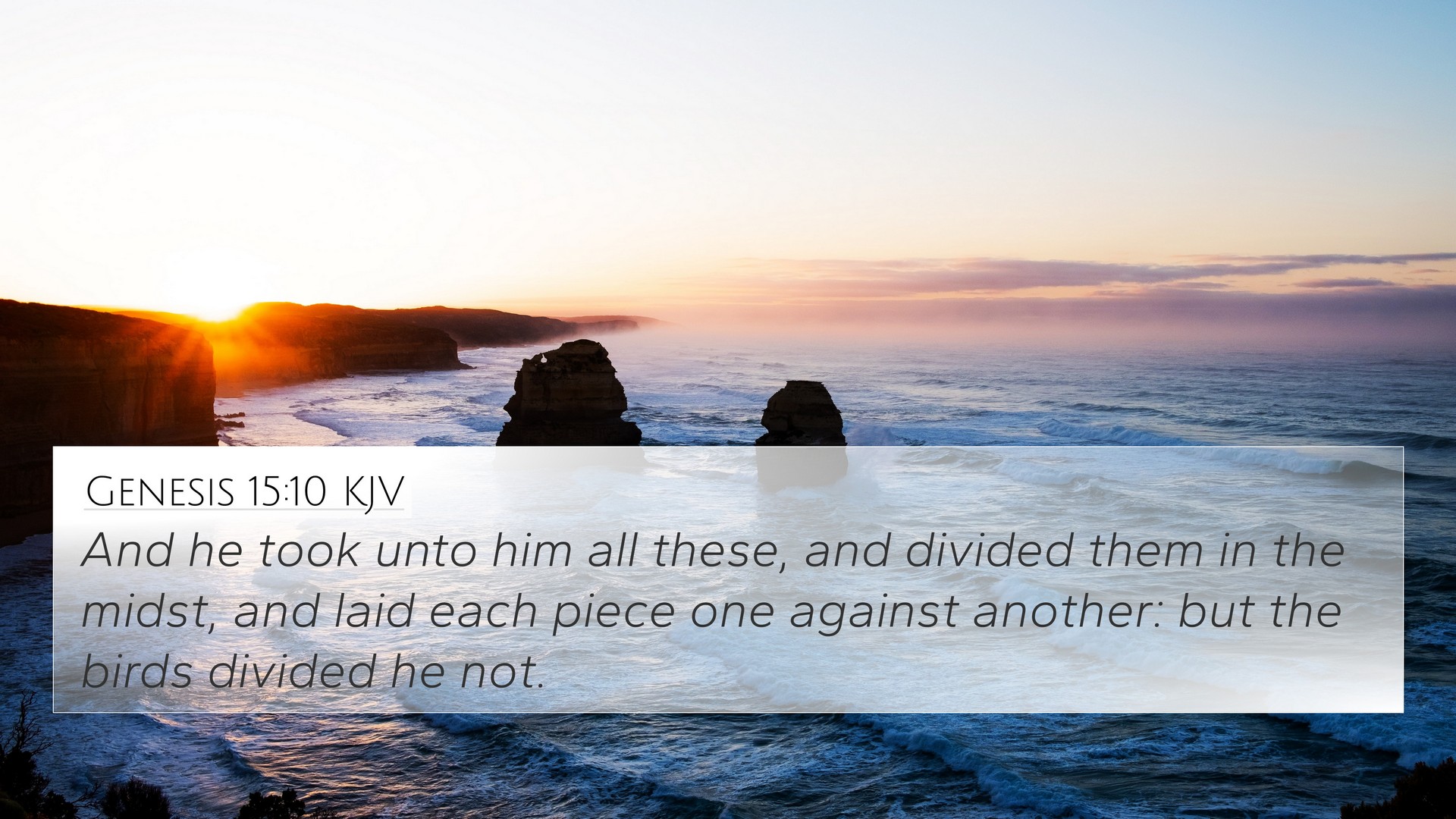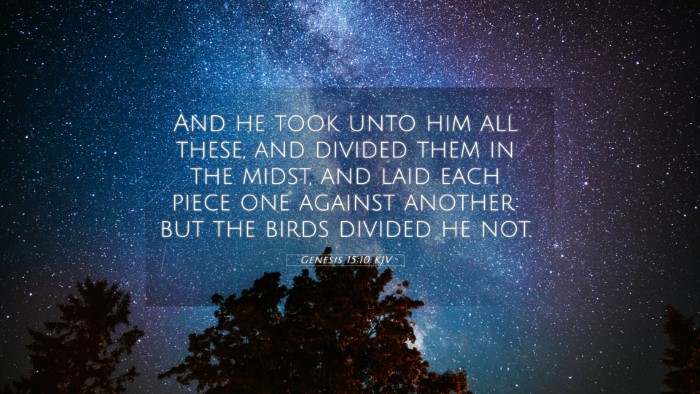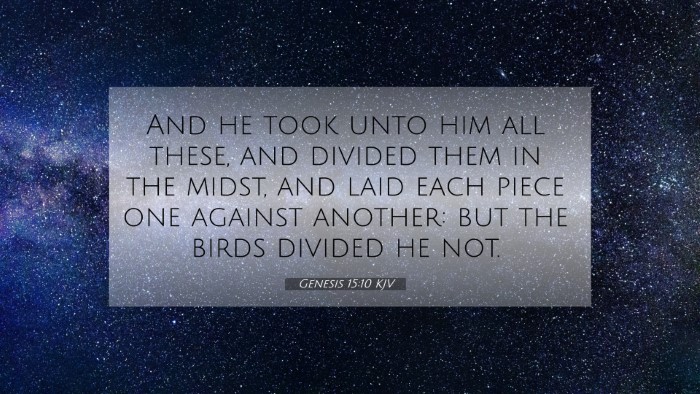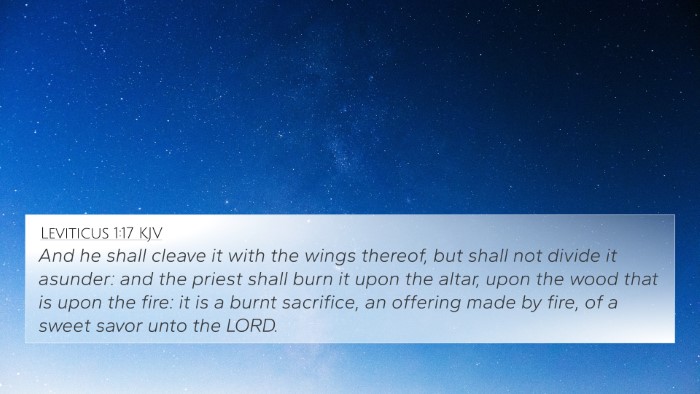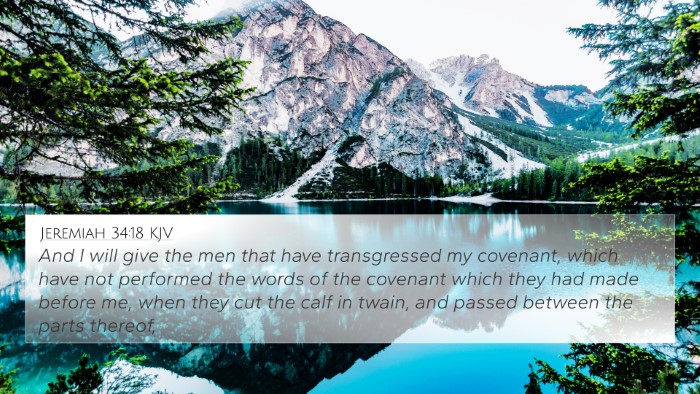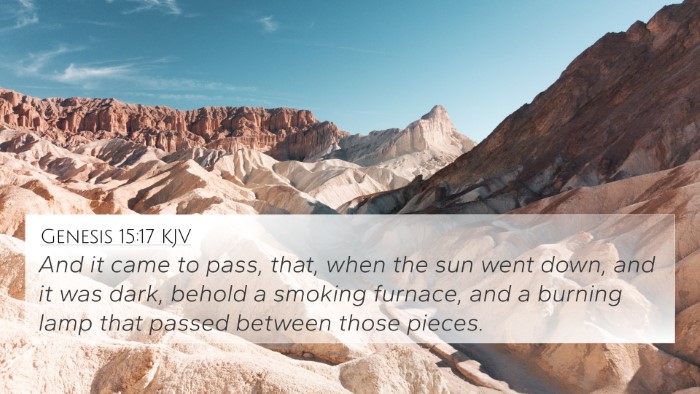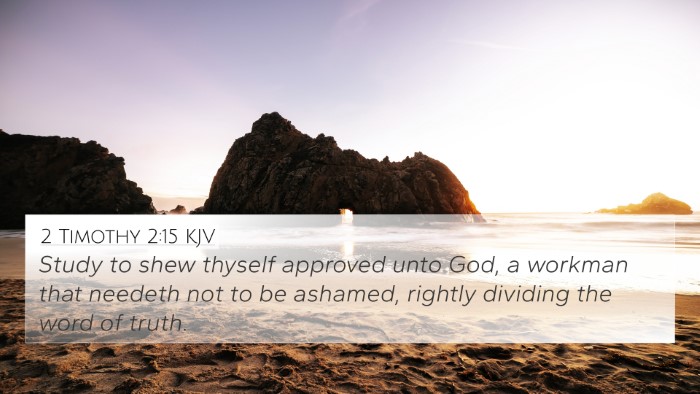Understanding Genesis 15:10
Genesis 15:10 states: "And he took unto him all these, and divided them in the midst, and laid each piece one against another: but the birds divided he not." This verse is significant as it marks the beginning of God's covenant with Abram, highlighting themes of sacrifice, divine promises, and the seriousness of covenant-making in biblical times.
Context and Overview
In this chapter, God reassures Abram of His promise regarding his descendants and their future. The ritual of cutting animals in half was a common practice that symbolically represented the seriousness of the covenant that was being established. Commentaries from Matthew Henry, Albert Barnes, and Adam Clarke provide essential insights into the meaning of this passage.
Insights from Commentaries
-
Matthew Henry:
Henry notes that the act of dividing the animals signifies a solemn covenant, emphasizing the cost and commitment involved in such agreements. It serves as a reminder of the seriousness with which God approaches His promises.
-
Albert Barnes:
Barnes elaborates on the significance of the divided pieces, indicating that this practice was meant to invoke a self-curse upon those who would fail in keeping the covenant. The act serves as an illustration of the gravity of the relationship being established between God and Abram.
-
Adam Clarke:
Clarke points out that the absence of the divided birds signifies the idea of simplicity and ease in God’s promises. While the larger animals symbolize substantial commitments, the birds being left whole illustrates God's readiness to fulfill His covenant swiftly.
Thematic Connections
The themes in Genesis 15:10 resonate throughout the Bible, creating various parallels and connections:
-
Covenant Making:
The rituals associated with covenants are significant. Genesis 9:16 discusses God's covenant with Noah, while Exodus 24:8 highlights the covenant with Israel.
-
Sacrificial Practices:
Leviticus 1:10-11 provides parallels in how sacrifices are presented, exemplifying the ongoing importance of blood offerings in covenant relationships.
-
The Future Promise:
Hebrews 6:13-18 speaks of God's promises and the unchangeable nature of His covenant, drawing a line from Abram's experiences to Christ's fulfillment of promises.
-
Faith and Obedience:
Romans 4:3 emphasizes Abraham's faith, showcasing that the covenant is grounded in trust in God's word.
-
Divine Assurance:
Isaiah 54:9 relates back to God's promises, reinforcing His commitment to never forsake His people.
-
Blood Covenant:
In the New Testament, Matthew 26:28 illustrates the blood of the new covenant which correlates back to the sacrifices of the Old Testament.
-
God's Unchanging Nature:
Malachi 3:6 reminds us that God does not change, which is foundational in understanding the continuity of His covenants.
Cross-Referencing Biblical Texts
To fully grasp the depth of Genesis 15:10, it's essential to look at cross-references:
- Genesis 9:16 - God's covenant with Noah.
- Exodus 24:8 - The blood of the covenant with Israel.
- Leviticus 1:10-11 - Instructions on burnt offerings.
- Hebrews 6:13-18 - God's unchanging promises.
- Romans 4:3 - The faith of Abraham.
- Isaiah 54:9 - God's everlasting kindness.
- Matthew 26:28 - Jesus' reference to His blood as a new covenant.
- Malachi 3:6 - God’s unchangeable nature.
- Luke 22:20 - The new covenant in Jesus’ blood.
- Acts 3:25 - The covenant made with Abraham and its fulfillment.
Conclusion
Genesis 15:10 encapsulates profound biblical truths that resonate throughout all of Scripture. By understanding the symbolism within this verse and its connections to other biblical passages, we gain a clearer picture of God's unchanging nature, His faithfulness to His promises, and the seriousness of covenant relationships.
This analysis serves not only as a supportive tool for personal study but also as a comprehensive guide for those seeking to understand the relationships between various Bible verses, facilitating deeper engagement with God’s Word.
Further Study
For those interested in exploring these themes further, using a Bible concordance or a Bible cross-reference guide can enhance your understanding of how Genesis 15:10 links to other Scriptures. Engaging in cross-reference Bible study methods can provide insights into the inter-Biblical dialogue that enriches our faith.
